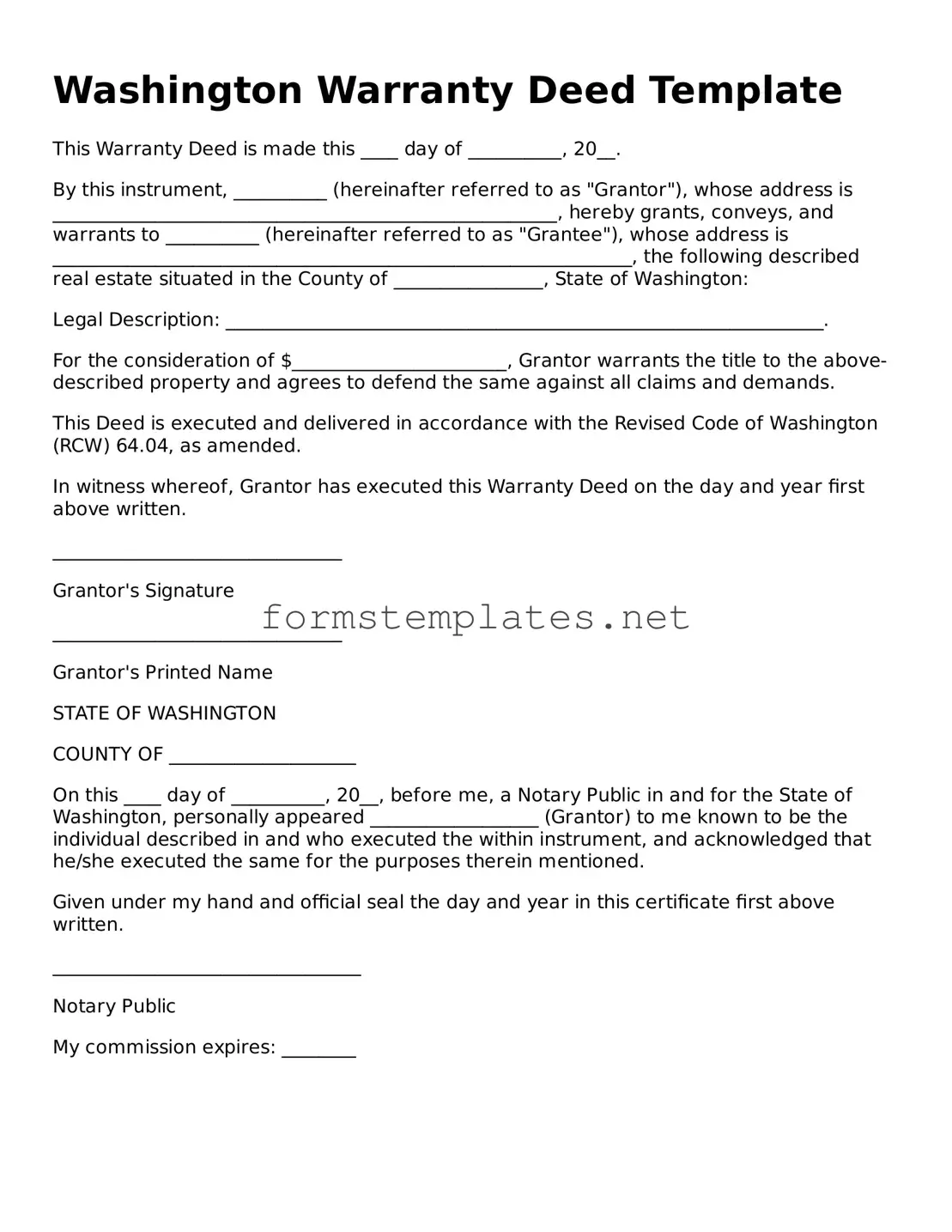Washington Warranty Deed Template
This Warranty Deed is made this ____ day of __________, 20__.
By this instrument, __________ (hereinafter referred to as "Grantor"), whose address is ______________________________________________________,
hereby grants, conveys, and warrants to __________ (hereinafter referred to as "Grantee"), whose address is
______________________________________________________________, the following described real estate situated in
the County of ________________, State of Washington:
Legal Description: ________________________________________________________________.
For the consideration of $_______________________, Grantor warrants the title to the above-described property and
agrees to defend the same against all claims and demands.
This Deed is executed and delivered in accordance with the Revised Code of Washington (RCW) 64.04, as amended.
In witness whereof, Grantor has executed this Warranty Deed on the day and year first above written.
_______________________________
Grantor's Signature
_______________________________
Grantor's Printed Name
STATE OF WASHINGTON
COUNTY OF ____________________
On this ____ day of __________, 20__, before me, a Notary Public in and for the State of Washington, personally appeared
__________________ (Grantor) to me known to be the individual described in and who executed the within instrument, and
acknowledged that he/she executed the same for the purposes therein mentioned.
Given under my hand and official seal the day and year in this certificate first above written.
_________________________________
Notary Public
My commission expires: ________
